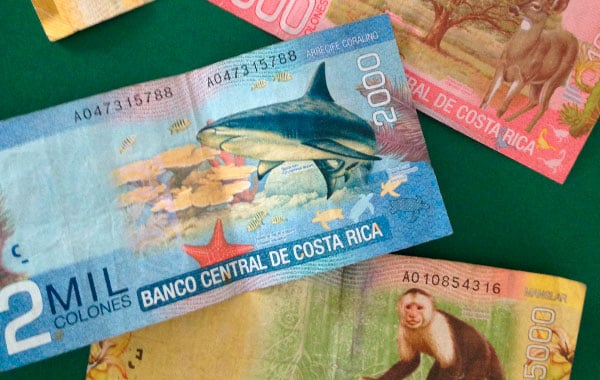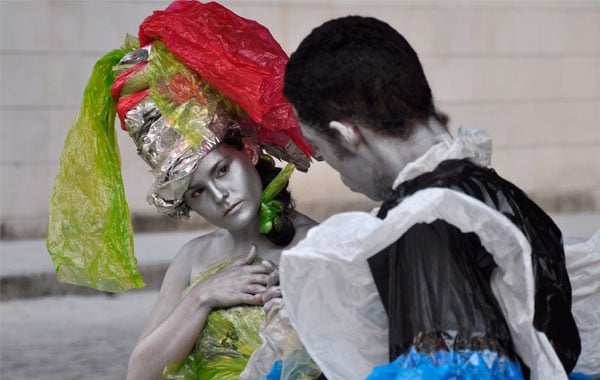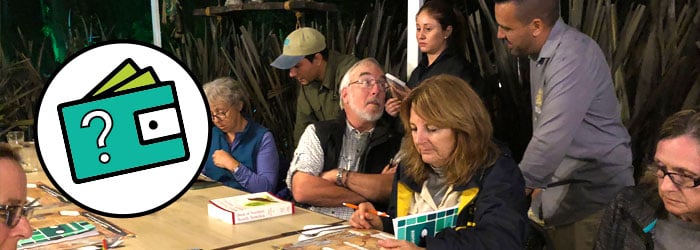Here’s a Tip: Decoding Gratuities
Imagine it’s the last night of a wonderful trip. Everything has gone smoothly so far. All your travelers have enjoyed themselves and built a nice camaraderie. As everyone gathers for a final farewell dinner, Thelma pulls you aside. She’s uncomfortable because Louise is trying to collect tips from everyone for the guide. “I thought tips were included!” Thelma says. Other people are starting to grumble. Tension builds, and a pleasant evening quickly turns awkward.
Gratuities are an effective way to show appreciation and reward outstanding service, but they can also be a minefield. As the group leader, you can help avoid misunderstandings and ensure the people who serve you in the field are recognized by taking a proactive approach.

A common question
Confusion about tipping abounds, even among seasoned travelers. “It’s a really common question. Of all the things people ask me, it probably ranks in the top five,” says Holbrook Travel Ambassador Debbie Jordan. “It’s just a tricky situation all the way around.”
The topic of tipping is one of the thorniest issues you may encounter as a group travel leader. For one thing, it’s a deeply personal issue; everyone has their own feelings about it. Some people come from backgrounds where tipping is not the norm and resent feeling “obligated” to tip, especially when they’re already paying a lot to travel. Others, in their enthusiasm, might go too far and end up shaming their fellow travelers.
To complicate matters further, customs vary by destination—both in terms of whom and how much to tip. For example, at restaurants in Mexico, a 10-20% tip for wait staff is customary, while in Costa Rica, a gratuity is already included in the bill by law. In some countries, it’s acceptable to tip in US dollars; elsewhere, you’ll want to tip in local currency.

The pros of all-inclusive pricing
Many travel providers will give you the option of bundling some or all gratuities into your trip’s price. If you do opt to include gratuities, you’ll usually either receive a check prior to departure so you can disburse funds in the field, or else the tips may be given to the in-country partner or guide for them to handle directly.
One benefit of including tips in the program cost is that it takes away the guesswork for participants. “I know some people are just so, so thankful to not have to worry about it. It’s a huge relief for them,” Debbie says. Additionally, participants don’t have to carry extra cash, and you ensure that no one helping your group accidentally gets stiffed.
Also consider your destination and itinerary: Tipping could become more complex if your group will interact with multiple guides, for example, or a boat crew (such as in the Galápagos), and pre-paying tips might be helpful. By making the trip price “all inclusive,” you make it more attractive to potential travelers.

“Gratuity included” – potential pitfalls
On the other hand, many participants prefer the freedom to tip at their own discretion. It’s also worth noting that including gratuities in the trip price puts more responsibility on you as the group leader if you have to handle all the tipping (and carry all the cash) yourself.
Though your trip price may be all-inclusive, you also raise the “sticker price” of your program, possibly dissuading some travelers from signing up. And if it’s not clearly communicated which tips are included, participants may tip in the field, over and above what they’ve already paid, without realizing it.
“Ultimately, it’s up to the group leader to decide which option makes the most sense for them and their group,” Debbie says. Many teachers, for example, prefer to bundle tips for student groups. This prevents the embarrassment of getting in the field and realizing the students didn’t bring enough money. On the other hand, adult travelers often prefer to handle their own money. “When participants give gratuities straight to the guide or driver, they get a chance to shake their hand and thank them for their service. Many people feel it’s more meaningful that way,” Debbie says.

Clear communication is key
Regardless of whether you decide to include gratuities or not, clear communication is vital in preventing misunderstandings. Your travel provider should be able to explain what the tipping expectations are in your host country and define exactly what is and is not included.
While your participants should receive clear guidelines in the pre-trip materials from the travel provider, be sure to reiterate this information in your own communications ahead of the trip. Break it down clearly and do the math for them. If you’ve decided to include gratuities in the trip price, advise them of any additional, unplanned tipping situations they could encounter—in some countries, it’s customary to tip bathroom attendants, street performers, or locals whose picture you’d like to take.
Once you’re in the field, your in-country guide can be an invaluable resource in understanding and communicating what to expect each day. Each night at dinner or before dispersing for the day, remind participants how much cash they should plan to carry the next day for tips or other incidentals. Holbrook Travel Specialist Lisa Palmese-Graubard recommends making a public announcement, while also letting participants know you’re available for questions one-on-one. “You don’t want to put people on the spot, and you don’t want to pressure people to tip more than they’re comfortable,” she says.

Be proactive
If you have the same guide and driver throughout the trip, they should typically be tipped once, at the end of the program. If gratuities are not included, it’s up to you how to handle that. Some leaders like to pass around an envelope anonymously to collect tips to give as a group, maybe with a thank-you card. Others prefer to let the participants tip on an individual basis. Again, you’ll know best what makes sense for your particular group.
Whatever you decide, Lisa recommends being proactive in your approach, and if you’re not collecting a group tip, encourage participants to tip individually. “I’ve seen instances where participants take it upon themselves to ‘organize’ a group gratuity and it can get really awkward,” she says. “People get overzealous. They can set the wrong tone or be a little pushy, so it’s better if the group leader spearheads it themselves.”
By planning in advance, communicating expectations, and taking initiative in the field, you can avoid uncomfortable situations, help your travelers feel at ease, and express gratitude to everyone who helps your group have the experience of a lifetime.
main photo by Ann and Rob Simpson


